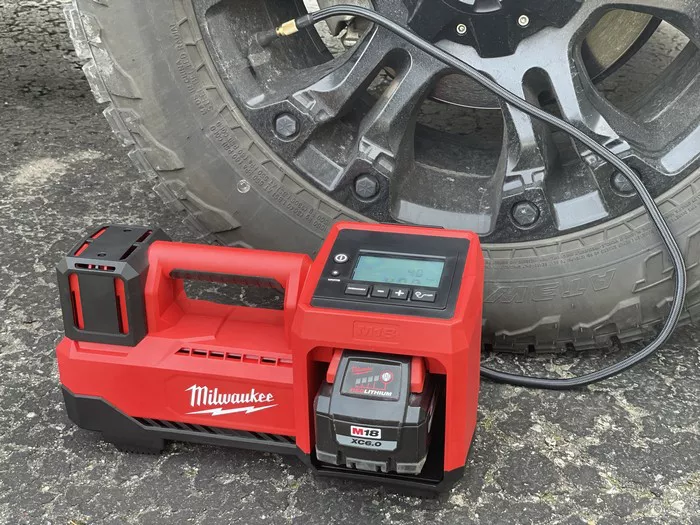Milwaukee air compressors are popular among DIY enthusiasts and professionals for their reliability, compact design, and powerful performance. Whether you’re inflating tires, powering pneumatic tools, or performing industrial tasks, knowing how to use the compressor correctly is essential for safety and efficiency. This guide provides a detailed breakdown of how to use a Milwaukee air compressor, covering preparation, operation, and maintenance.
Understanding the Milwaukee Air Compressor
Before using any air compressor, it’s vital to understand its features and components. Milwaukee offers portable, cordless, and heavy-duty air compressors, each suited for specific needs.
Key Components
Tank: Stores compressed air for use.
Pressure Regulator: Adjusts the air pressure output.
Pressure Gauges: Monitor tank and regulated air pressure.
Air Outlet: Connects to air hoses and tools.
Power Source: Typically battery-powered or corded.
Types of Milwaukee Air Compressors
Portable Models: Designed for lightweight and occasional use.
Cordless Models: Powered by Milwaukee’s M18 batteries for convenience in remote locations.
Industrial Models: Larger, more powerful units for demanding tasks.
Understanding the type and specifications of your air compressor ensures you operate it within its designed capacity.
Preparing for Use
Preparation is critical to ensure safe and effective operation.
Check the Manufacturer’s Manual
Before anything else, review the user manual. It contains essential safety warnings, recommended pressure levels, and specific instructions for your model.
Inspect the Compressor
Visual Inspection: Check for visible damage or loose components.
Tank Drainage: Ensure the tank is free of residual moisture to prevent rust or reduced efficiency.
Battery or Power Supply: Ensure batteries are charged, or the power cord is in good condition.
Select the Right Air Hose and Tools
Match the air hose diameter with the compressor outlet.
Confirm that pneumatic tools are compatible with the compressor’s pressure output.
Setting Up the Milwaukee Air Compressor
Positioning the Compressor
- Place the compressor on a flat, stable surface.
- Ensure proper ventilation to prevent overheating.
Connecting the Air Hose
- Attach the air hose to the outlet.
- Secure the connection with the coupler to prevent air leaks.
Adjusting the Pressure Regulator
- Identify the required PSI (pounds per square inch) for your tool or task.
- Turn the regulator knob clockwise to increase pressure or counterclockwise to decrease it.
Operating the Milwaukee Air Compressor
Powering On the Compressor
- Plug in the compressor or insert the battery.
- Flip the power switch to the “On” position.
- Wait for the compressor to pressurize the tank fully. You’ll notice the tank pressure gauge rise to its maximum capacity.
Using Pneumatic Tools
- Attach your tool to the air hose securely.
- Confirm the tool operates within the set pressure range.
- Test the tool briefly to ensure proper functioning.
Inflating Tires or Objects
- Connect the appropriate nozzle to the air hose.
- Check the recommended PSI for the item you’re inflating.
- Monitor the pressure gauge while inflating to avoid over-inflation.
Post-Use Procedures
Proper shutdown and storage of your air compressor extend its lifespan.
Depressurizing the Tank
- Turn off the compressor and unplug it.
- Open the tank valve to release excess air.
- Allow the compressor to cool before handling.
Draining Condensation
Moisture accumulates inside the tank during use. Open the tank’s drain valve to remove water and prevent rust.
Maintenance Tips for Longevity
Regular maintenance is crucial for ensuring your Milwaukee air compressor remains efficient and safe.
Routine Inspections
- Check hoses and fittings for cracks or wear.
- Inspect the tank for signs of rust or damage.
Battery Care
- Use genuine Milwaukee M18 batteries.
- Store batteries in a cool, dry place to maintain performance.
Lubrication and Cleaning
- Lubricate moving parts as recommended in the manual.
- Clean the compressor exterior regularly to prevent dust accumulation.
Service Schedule
- Replace air filters periodically to ensure clean airflow.
- Schedule professional servicing annually, especially for high-use models.
Safety Precautions
Safety should always be your top priority when operating an air compressor.
Protective Gear
- Wear safety glasses and gloves.
- Use ear protection in noisy environments.
Avoid Over-Pressurization
- Never exceed the compressor’s maximum PSI rating.
- Monitor the pressure gauges during use.
Ventilation and Heat Management
- Avoid using the compressor in confined spaces without proper ventilation.
- Ensure the compressor doesn’t overheat during prolonged use.
Troubleshooting Common Issues
Compressor Won’t Start
- Check the power source or battery charge.
- Ensure the power switch is in the correct position.
Air Leaks
- Tighten loose fittings or replace damaged hoses.
- Use Teflon tape to seal persistent leaks.
Inconsistent Pressure Output
- Clean or replace clogged air filters.
- Inspect the pressure regulator for damage.
Conclusion
The Milwaukee air compressor is a versatile and reliable tool, but its performance depends on proper operation and maintenance. By following this guide, you’ll maximize its efficiency and lifespan while ensuring your tasks are completed safely and effectively. Whether you’re inflating tires, using pneumatic tools, or performing industrial tasks, a well-maintained Milwaukee air compressor is an invaluable asset.
Take the time to understand your model, follow safety procedures, and perform regular maintenance for optimal performance. With these steps, your Milwaukee air compressor will serve you well for years to come.
Related topics:

